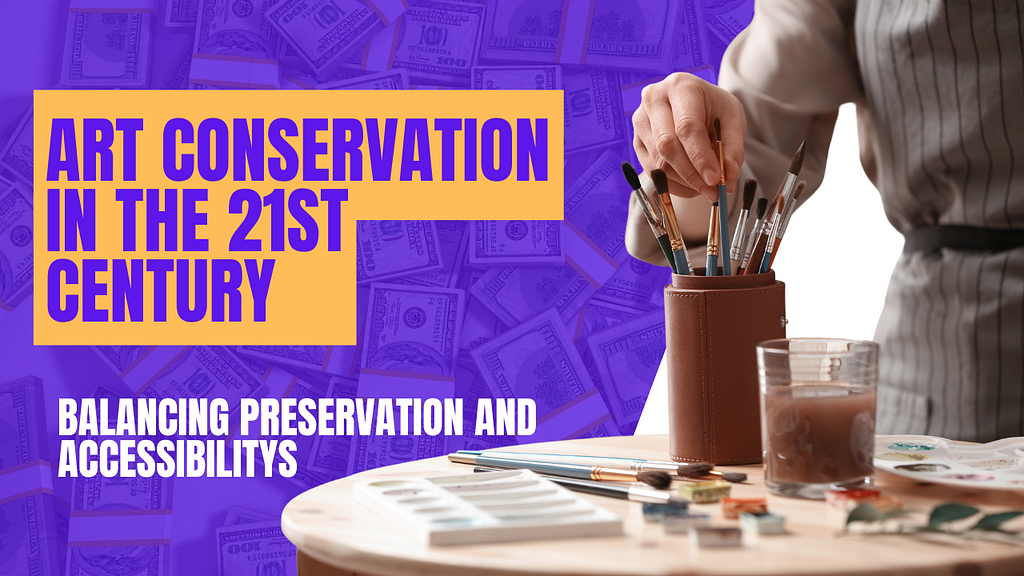
Art, a timeless expression of human creativity, is not only a reflection of culture and history but also a delicate entity susceptible to the passage of time. In the 21st century, the challenge for the art world lies in finding a delicate balance between preserving the integrity of artworks and making them accessible to a global audience. The intersection of technology, conservation techniques, and public demand has ushered in a new era for art conservation.
Preservation Challenges in the Digital Age
The digital age has brought both opportunities and challenges to art preservation. While digital technologies allow for high-resolution documentation and analysis of artworks, they also introduce new risks. For instance, the digitization of paintings can make them vulnerable to unauthorized reproduction and distribution. Striking a balance involves employing cutting-edge conservation techniques, such as high-fidelity digital replicas, which can preserve the essence of the original while mitigating risks.
Example: The Rijksmuseum in Amsterdam
The Rijksmuseum faced the challenge of preserving fragile artworks while meeting the demands of a global audience. They implemented a digital strategy, allowing online visitors to explore high-resolution images of artworks. This not only safeguards the originals but also enhances accessibility, offering a virtual museum experience to art enthusiasts worldwide.
Innovations in Conservation Techniques
Advancements in conservation techniques have played a pivotal role in the preservation of artworks. Traditional methods, such as cleaning and restoration, have evolved with the introduction of non-invasive technologies like laser scanning and 3D printing. These innovations enable conservators to repair artworks without altering their original state, ensuring that future generations can appreciate them as intended.
Example: The Restoration of Michelangelo’s David
Michelangelo’s David, an iconic masterpiece, faced degradation over the centuries. Through advancements in non-invasive restoration techniques, conservators were able to address structural issues and stabilize the sculpture. This approach preserved the authenticity of the artwork while utilizing modern technology to ensure its longevity.
Accessibility Through Virtual Museums and Augmented Reality
The demand for accessibility has driven institutions to explore virtual museums and augmented reality as mediums for experiencing art. These technologies break down geographical barriers, allowing individuals from around the world to engage with artworks without physically visiting a museum. While providing unprecedented access, they also raise questions about the tangible, visceral experience of art.
Example: Google Arts & Culture
Google Arts & Culture is a platform that leverages technology to make art accessible globally. Through virtual exhibitions and high-resolution images, users can explore artworks from various museums. While this democratizes access, it prompts discussions on the importance of physical encounters with art and the role of museums as physical spaces.
Ethical Considerations in Conservation
The 21st century has brought forth ethical considerations regarding the conservation of art. Questions arise about the extent to which interventions are permissible and whether certain artworks should be intentionally left to deteriorate over time. Striking a balance requires thoughtful consideration of cultural significance, artistic intent, and the responsibility of custodians to future generations.
Example: The Case of the Sistine Chapel Ceiling
The Sistine Chapel ceiling, painted by Michelangelo, has undergone extensive restoration efforts. However, debates persist about the extent to which the artwork’s original state should be preserved. Striking a balance between preserving the masterpiece and respecting the artist’s intent raises ethical dilemmas for conservators and cultural custodians.
As we navigate the complexities of art conservation in the 21st century, it becomes evident that the preservation and accessibility of art are intertwined challenges. Striking the right balance involves leveraging technology for documentation and restoration while respecting the ethical considerations surrounding each artwork. The fusion of innovation and tradition allows us to ensure the longevity of cultural treasures while making them accessible to a global audience, securing the legacy of art for generations to come.
Art Conservation in the 21st Century: Balancing Preservation and Accessibility was originally published in Educartion on Medium, where people are continuing the conversation by highlighting and responding to this story.